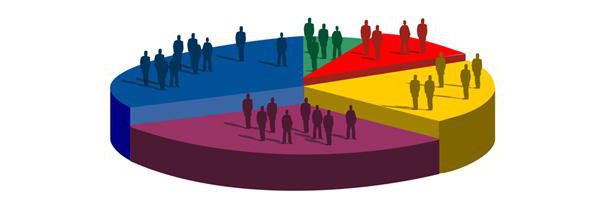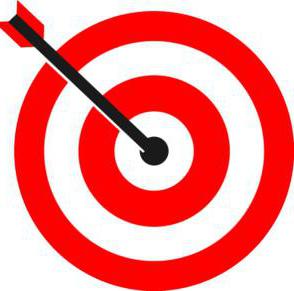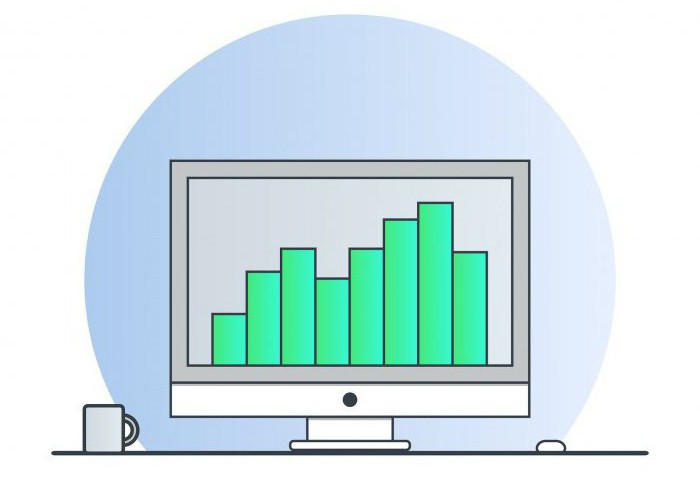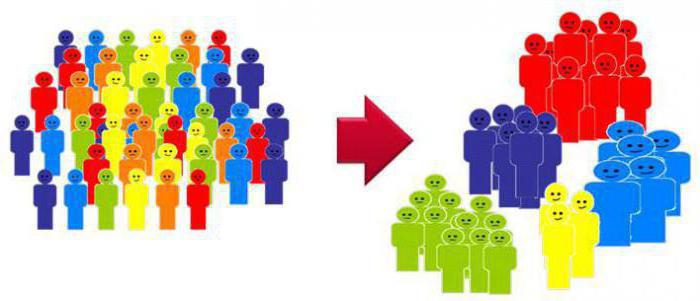In just a few decades, competition in the world market has reached incredible proportions - today, any business, regardless of its size, is in a continuous "struggle for survival". That is why so much attention is paid to the study of the nature and characteristics of this phenomenon. The greatest contribution to the development of competition theory was made by American economist, professor at Harvard Business School Michael Porter. He was the first to single out and describe the main strategies for the behavior of companies in the markets, among which the most popular is differential marketing.

general description
The strategy of differentiated marketing allows for high competitiveness and long-term business growth. In this case, the company does not try to sell “everything and everything”, but is not limited to a competitive narrow segment of consumers, but at the same time develops several programs for different market segments.
Differentiated marketing began to develop relatively recently, in the 60s of the last century, when the concept of segmentation arose in marketing theory. At the moment, this strategy is considered the most popular. Many large companies adhere to it. So, General Motors focuses on the fact that the concern produces cars for any person and any budget, and IBM develops hardware and software for various segments of the computer market.
The essence of this strategy is to expand the range of products and the use of certain types of advertising for each target audience.

Benefits
In fact, the differentiation strategy combined the best features of mass and concentrated marketing. With a wide range of potential customers, the company is able to offer everyone exactly what it needs.
Easy introduction to selected segments
A thorough study of the target audience allows you to make the product as attractive as possible for a specific group of consumers. Due to the specific advantages of the product itself, as well as well-chosen methods of promotion, the company's offer "hits exactly the target" and immediately arouses the interest of the audience.
Resilience to market fluctuations
In contrast to concentrated, product-differentiated marketing provides the business with greater stability. Even if for some reason the demand for products in one of the segments decreases, the company will continue to make profit at the expense of others. Thus, the company gets additional space for strategic maneuvers (while a company that focuses on one segment can destroy this situation).

Brand Recognition
Another important advantage of this strategy is that consumers prefer not a single product, but the brand as a whole. This is extremely important, because such a commitment serves as additional protection against substitute products and fakes, and also reduces the sensitivity of customers to lower prices by competitors.
High competitiveness
Originality and high, from the point of view of Central Asia, product quality create additional difficulties for competitors in the development of this market.
Ability to set high prices
For the same reason, the company has the opportunity to set the price above the market average - consumers are willing to overpay for quality and a proven brand.

disadvantages
Nevertheless, with all its advantages, differentiated marketing has quite significant disadvantages compared to other types. About them - below
High price
The first and most serious problem is the need for large investments. The company that has chosen this strategy, increases production costs, as the number of manufactured goods is growing. In addition, marketing costs increase, since each segment needs its own communication system.
Significant effort (other than financial)
The basis of this approach is primarily the most serious work on the study of target markets and the development of unique proposals. This, in turn, requires highly qualified employees (marketers, developers, etc.), the introduction of modern technologies and powerful patent protection of products.

The presence of competition in all segments
It is also worth considering that when differentiating, a company inevitably disperses forces. Meanwhile, in each of the selected segments, the company has competitors, due to which it is almost impossible to achieve an overwhelming advantage.
Price difference
If it gets too big, it can scare potential customers. Continuous research and development, as well as the need to use innovative technologies inevitably lead to an increase in the cost of production.
Consumer priority risk
Over time, the characteristics of the product on which differentiation is based (for example, design) may lose value for the target audience, as a result of which the company will lose its position.

Strategy Situations
When choosing undifferentiated / differentiated / concentrated marketing, a company should take into account both market features and its own capabilities. When is a product leadership strategy the best choice?
- If the company has a sufficient amount of resources - material, financial, labor, etc.
- If the company produces a variety of products that differ in design and functionality.
- At certain stages of the product life cycle - after reaching the maturity stage, when the level of profit allows you to think about expanding the business.
- In a situation where direct competitors use undifferentiated marketing.
- If the market is heterogeneous, the needs, tastes and preferences of consumers vary widely.
Thus, we can conclude that the differentiation strategy is most suitable for large companies that have the appropriate technological and economic capabilities. First of all, this approach is relevant for the B2C market (consumer), in which goods and services are sold to individuals who are guided by their personal tastes and preferences when choosing.

Differentiated Marketing: Case Studies
Many well-known brands use this strategy in their activities, since it is it that allows you to get the most income.
An example is Edison Brothers. It owns a total of more than 900 stores, combined in 4 networks, each of which works with a separate market segment. So, the Chandler network offers prestigious expensive shoes, Baker sells shoes at a reasonable price, Bert specializes in the economy segment, and Wild Payer focuses on connoisseurs of exclusive stylish models.
An even brighter example is the agricultural journal Farm Journal. Seeing the trend towards specialization, the editors decided to release separate applications for 5 different profiles - cotton growers, beef cattle breeders, livestock breeders, owners of meat farms and pig farmers in 26 different regions of the country. In fact, 80% of the content of each number is determined precisely by the specialization and geographical location of the subscriber's farm.This allowed Farm Journal to increase the number of readers by several times, because absolutely everyone finds useful information on the pages of the magazine.
Many companies, as they develop, switch to differential marketing. Undifferentiated can only be effective in homogeneous markets where all customers need the same thing. For example, toothpaste manufacturers such as Colgate or Aquafresh work on this principle. But almost all manufacturers of smartphones (in particular, Samsung) are forced to adapt to different segments both in terms of pricing policy and in relation to the functional diversity of models.
However, not everyone moves from the mass to the differentiated one. Concentrated marketing was the starting point for the popular Reebok brand. At the dawn of its existence, the company produced sports shoes exclusively for professionals, but later came to the conclusion that a significant proportion of sales were made by lovers. As a result, Reebok created two separate lines - shoes for professional athletes and ordinary people, and then in each of them allocated lines for sports. This allowed the company to reach a whole new level, build a truly powerful brand and increase profits many times over.